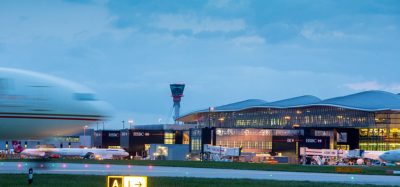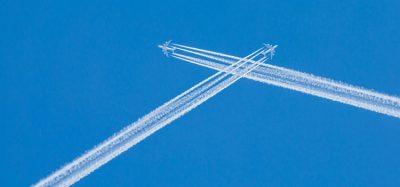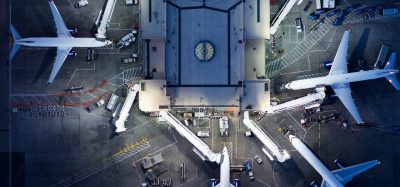Friction testing at Swedish airports
Posted: 5 April 2010 | Fredrik Nilsson, Airport Engineer, LFV Group | No comments yet
There are many parameters that have an impact on the aircraft traffic at an airport. Wind and runway conditions are some of the parameters needed for the pilot to calculate if he or she can take off or land at an airport. The friction value is one of the parameters used.
There are many parameters that have an impact on the aircraft traffic at an airport. Wind and runway conditions are some of the parameters needed for the pilot to calculate if he or she can take off or land at an airport. The friction value is one of the parameters used.
The friction value varies due to many different conditions. Low friction values on runways often occur in winter conditions with snow, ice or frost on the runway. But there can also be low friction values at other times of the year, for example, if there is a lot of rubber from the wheels of landing aircraft on the runway, or if the runway is wet due to rain.
Runway friction testing
At Swedish airports the friction value is measured regularly during the winter period. There is a requirement to report the available friction value and presence of snow, slush, ice or water on a runway, as well as to make an assessment of the depth and location of snow, slush or water. Reports of assessment of contaminant depth and the friction value on a runway will be interpreted differently by the operator for departing and landing aircraft.
Join us live: Shaping the Next Generation of Hold Baggage and Air Cargo Screening
Join us live for an insightful webinar on 11th December at 14:00 GMT, in collaboration with Smiths Detection, as we explore the strategic balance of operational efficiency, regulatory compliance, and sustainability in high-volume security environments.
This session offers a focused look into future-proofing your security strategy.
Key learning points
- Cost Reduction: Strategies to minimize bag travel time while simultaneously reducing operational costs.
- Regulatory Roadmap: Insights into the next wave of regulatory changes and their impact on future investment decisions.
- Sustainable Systems: Practical approaches to building sustainability into security systems and lowering the total cost of ownership (TCO).
- Scalable Solutions: Real-world examples of scalable systems supporting current airport growth and preparing for tomorrow.
Register now for expert insights, case studies, and actionable strategies on operational efficiency!
Take-off operators will have to take into account the contaminant drag effect and, if applicable, aquaplaning on take-off and accelerate-stopping distance requirements based on information which has been made available to them. The friction value is also important for take-off operators if there will be an abrupt take-off. With regard to landing, the principal hazard results from loss of friction due to aquaplaning or compacted snow or ice.
There is a general concern over the adequacy of the available friction between the aircraft tyres and the runway surface during certain operating conditions. This is particularly valid in conditions with snow, slush, ice or water on the runway, in connection with aircraft having high take-off or landing speeds.
This concern is more acute for jet transport aircraft, since the stopping performance of these aircraft is, to a greater degree, dependent on the available friction between the aircraft tyres and the runway surface. Their landing and take-off speeds are high, and in some cases the runway length required for landing or take-off tends to be critical in relation to the runway length available. In addition, aircraft directional control may become impaired in the presence of crosswinds under such operating conditions.
At Stockholm Arlanda airport, a friction testing car is used to measure the friction on the runways. The friction is measured from 1.0 down to 0.01. If the friction coefficient is 1.0 it means a high friction that can be compared with a stopping distance as short as zero metres. A friction value of 1.0 is impossible to get. If the friction coefficient is 0.01 it means non friction. For the friction coefficient there is a special scale to quote an estimate friction coefficient.
| Measured or calculated coefficient | Estimated surface friction |
| 0.40 and above | Good |
| 0.39 – 0.36 | Medium / Good |
| 0.35 – 0.30 | Medium |
| 0.29 – 0.26 | Medium / Poor |
| 0.25 and below | Poor |
| 9- unreliable | Unreliable |
When the friction value on the runway is measured, a friction testing car is used. The friction value is measured the whole length and both sides of the runway, at a speed of 96 km/h. The measuring point is 5-10 metres from the runway centerline. When the measuring is finished, the friction coefficient, together with the contamination, is reported to the air traffic service (ATS) and the flight planning centre (AIS).
SNOWTAM reports
To report the condition on the runways a SNOWTAM is used. SNOWTAM is a special sheet to report when winter conditions appear at an airport. The airport is obliged to monitor the condition of the runways four times during a period of 24 hours. The 24-hour period starts before the first known take-off or landing in the morning. If the friction coefficient increases more then 0.05 units, the airport must take a new measurement and leave a new SNOWTAM report. In the report the runway will be upheld in three equal parts and named sections A, B and C.
Section A will always be at the runway with the lowest runway number.
Mechanical treatment
When the friction coefficient gets below 0.40 the airport will start to decamp the runways and increase the friction coefficient. This is important in the runway concept used. Different methods are used, both mechanical and chemical.
Mechanical treatments used include; plough, sweeper and blower equipment. At Stockholm Arlanda airport nine to ten plough, sweeper and blower machines go through the runway in one step. At smaller airports there can be only one or two pieces of equipment going at the same time. Then they need much more time to prepare the airport for a starting or landing aircraft. The use of mechanical treatment is the first step to increase the friction value.
Chemical treatment
After the runway has been ploughed, swept and blown, the friction value is measured. At Stockholm Arlanda airport, two friction testing cars are used to get values from both sides of the runway centreline in one step. At smaller airports one car is driven there and back.
If the friction value cannot be increased to a sufficient level, chemical treatment is performed as a second step. Potassium formate is the most common runway deicer used at Swedish airports. If the friction coefficient is above 0.40, aircraft operators do not need to take the friction coefficient into consideration during landing or take-off. At Stockholm Arlanda airport the goal is to have summer conditions on the runways even in the winter.
About the author
Fredrik Nilsson has been working for the LFV Group as an Airport Engineer since 1999, working on projects within winter operations, risk analysis, safety management system, airside operations and pavement management system.
Join our free webinar: Transforming Airport Security – Innovation, Impact, and the Passenger Experience
The landscape of airport security is undergoing a profound transformation, driven by evolving threats, technology, and passenger expectations. This webinar focuses on how AtkinsRéalis has been transforming security processes at some of the world’s busiest airports with smarter, more adaptive solutions.
Date: 4 Nov | Time: 14:00 GMT
REGISTER NOW TO SECURE YOUR SPOT
Can’t attend live? No worries – register to receive the recording post-event.


















